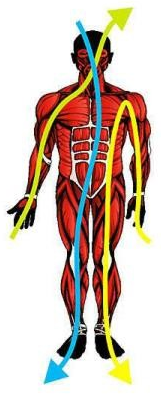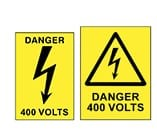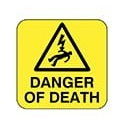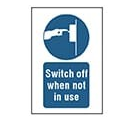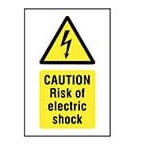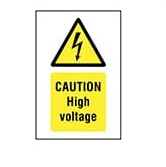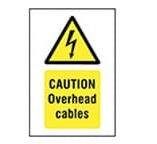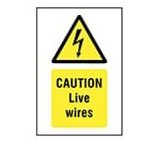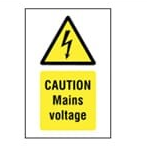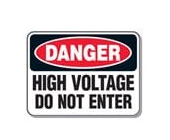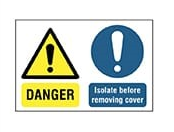Electricity is potentially dangerous and has inherent risks, especially from a circuit failure, misuse, inexperienced handling, or negligence. The effects on humans, appliances, and other objects can be devastating. When installing an electrical circuit, extending an existing circuit, or looking for a new office or guest house it is recommended perform a full assessment on the facility. Full assessments should ensure that the circuit can safely handle the current flow needed, proper protections devices exist, the circuit is grounded, and there are no potential hazards.
For equipment, the dangers of an improperly installed or secure circuit are short circuits and overloads. For people, the dangers are come from insulation faults that lead to direct or indirect contact with electrical currents.
Short Circuit
A short circuit is a strong overcurrent of short duration. In single-phase systems, a short circuit occurs whenever the phase and neutral wires accidentally come into contact; in three-phase systems, this can occur when there is contact between two of the phases. For DC, a short circuit can occur when the two polarities come into contact.
Short circuits can also occur when there is a break in the insulation surrounding a cable, or when two conductors come in contact via an external conductor (example: a metal hand tool) or water bridges the connections of the lines, causing the resistance of the circuit to become close to zero and thus reaching high values (U=RxI) very quickly.
Physical damage can expose cables inside of insulation, while a sudden temperature increase of the conductors can cause the insulation and copper cores to melt.
Overload
An overload is caused by a weak overcurrent occurring over a long duration. Overloads can be caused by a current that is too high to be conducted through the relative diameter of the conducting cable.
There are two kinds of overload:
- Normal overloads, which can occur when a motor starts up. Normal overloads are short-lived and pose no danger.
- Abnormal overloads occur when too many appliances are connected to the same circuit or the same outlet at the same time, or when a connection terminal isn’t properly tightened. These problems are common in old buildings with too few outlets, but can occur on any installation as the number of electric devices increase. The current is lower in an abnormal overload than that of a short circuit, but the results are identical: overheated wires, damaged insulation, high risk of fire.
Insulation Faults
Insulation faults are caused by damage to the insulation of one or more phase conductors. These problems can lead to electrical shocks from current-carrying lines, and if the damaged conductor touches a metal surface or casing, can cause appliance and equipment to be electrified to the touch as well.
An insulation fault can also be caused by moisture from water damage or natural humidity in walls.
These faults can be very dangerous, especially when a person comes into direct contact with the conductor, a metal casing, or a defective electrical appliance. In all cases the human body becomes part of the electrical circuit causing an electric shock.
Injury from Electrical Exposure
The damage to a human body is done by 3 factors:
- The amount of current flowing through the body.
- The pathway of the electricity entering the body.
- The duration of the body’s exposure to the electricity.
The below table and image details the general response of a human body to different strengths of electrical current. The arrows show the flow of electricity from the point of entry to the nearest exit point. The blue arrow shows the flow of current through the head / heart then to ground, which is the most lethal.
| Reaction | |
| Painful shock | |
| Muscle contraction – “Cannot Let Go” danger | |
| Lung paralysis, usually temporary | |
| Ventricular fibrillation, usually fatal | |
| Certain ventricular fibrillation, fatal | |
| Heart paralysis, severe burns |
Safety Equipment
To avoid or reduce the damaging effects current can have in a human body, is highly recommended to use protective equipment and take precautions when handling electrified circuits and equipment.
- Rubber Gloves – To prevent hands from directly making contact with the current. They must be close fitting and have an excellent grip.
- Tight Sleeves and Trouser Legs – To prevent unintentional contact or being pulled into dangerous equipment.
- Remove rings from fingers.
- Rubber Boots – To prevent the body from forming a complete conducting electrical circuit.
Electrical Hazards
If an installation is properly set up, grounded and well maintained, electrical shorts or other issues should not be a problem. If the basics of installation, handling, maintenance are neglected, several hazards can occur.
| Hazards | Description | Possible Sources |
|---|---|---|
| Shocks | Electric shock occurs when the human body becomes part of the path through which current flows. The direct result is electrocution. The indirect result is injury resulting from a fall or uncontrolled movement. |
|
| Burns | Burns can result when a person touches electrical wiring or equipment that is energised. | |
| Arc-Blast | Arc-blasts occur from high-amperage currents arcing through the air. This can be caused by accidental contact with energised components or equipment failure. The three primary hazards associated with an arc-blast are:
| |
| Explosions | Explosions occur when electricity provides a source of ignition for an explosive mixture in the atmosphere. | |
| Fires | Electricity is one of the most common causes of fires both in the home and in the workplace. Defective or misused electrical equipment is a major cause of electrical fires. |
Hazard Signs
Safety signs keep persons aware of hazards. It is important to located them accordingly so persons working around the hazard can take proper precaution. They should be in visible places and include the maximum possible information about the source of and properties of the danger. In case of an incident, this information can be a valuable information.
Example of these signs include:
| Voltage Warning Labels | Electrical Voltage Symbol | Danger of Death from Electricity Warning | Switch Off when not in Use |
|
|
|
|
|
| Electric Shock Warning | High Voltage Warning | Overhead Cables Warning | Live Wires Warning |
|
|
|
|
|
| Buried Cables Warning | Mains Voltage Warning | Danger - Do not Enter Sign | Warning - Isolate Before Removing Cover |
|
|
Electrical Fires
Electricity is one of the most common causes of fire. Electrical current and the chemical reaction of fire are both methods of transferring energy; while electricity involves the movement of negatively charged electrons, a flame consists of the dispersal of both positive and negative ions. Therefore, faulty wiring for example can cause arcing and sparking that can easily become a flame if the conditions to produce a fire are present, such as oxygen, heat or any kind of fuel.
Power sources that are directly related to electrical fires can be any of the following:
- Faulty wiring.
- Overloaded devices.
- A short circuit.
- Power cord damage.
- Overloaded electrical outlets.
- Improperly installed light fixtures.
Part of avoiding an electrical fire includes properly sizing, using and maintaining the electricity system, however hazards can occur regardless and fire suppression tools should be in place. Fire extinguishers are the most reliable mean to do it, however the appropriate fire extinguisher must be used or the extinguisher itself may be ineffective.
Fire Extinguisher Classes Per Region:
| American | European | UK | Australian/Asian | Fuel/Heat Source |
|---|---|---|---|---|
| Class A | Class A | Class A | Class A | Ordinary combustibles |
| Class B | Class B | Class B | Class B | Flammable liquids |
| Class C | Class C | Class C | Flammable gases | |
| Class C | Unclassified | Unclassified | Class E | Electrical equipment |
| Class D | Class D | Class D | Class D | Combustible metals |
| Class K | Class F | Class F | Class F | Kitchen Grade (Cooking oil or fat) |
Electrical fires need to be put out by a non-conductive substance, unlike the water or foam found in class A fire extinguishers. If someone attempts to put out an electrical fire with something like water, there is a high risk of electrocution since water is conductive. Class C fire extinguishers use monoammonium phosphate, potassium chloride, or potassium bicarbonate, which do not conduct electricity. Another option is a class C extinguisher that contains carbon dioxide (CO2). CO2 is great for suppressing fires because it takes the fire’s oxygen source away as well as diminishes the fire’s heat since the CO2 is cold when expelled from the extinguisher.
Prevention
Prevention is the most effective measure to mitigate risk. Some of these preventive measures planners can take when working around electricity include:
- Never plug appliances rated at 230 V into an 115V electrical socket.
- Place all lamps on level surfaces and away from things that can burn.
- Use bulbs that match a lamps’ rated wattage.
- Do not overload an electrical outlet by connecting several devices into a single receptacle using any device.
- Do not tug or pull any electrical cords.
- If an outlet or switch is feeling warm, shut off the circuit and call an electrician to check the system.
- Follow manufacturer’s instructions for plugging a device into an electrical outlet.
- Avoid running extension cords under carpets or across doorways.
- Do not connect the cord of an old electrical device to a newer cord.
- Replace and repair frayed or loose cords on all electrical devices.
- Keep all electrical appliances away from water.
- Contact electricity authority if any damage done to overhead cables, outdoor panel boxes, or trees touching high voltage lines is seen.
- Review architectural drawings and/or contact electrical authorities before doing any work involving digging.
- Take heed to all warning signs indicating electrical hazards.
- Ensure a fire extinguisher is placed where the likelihood of a hazard occurring is great.
- Always wear safety equipment when around electrical equipment.


